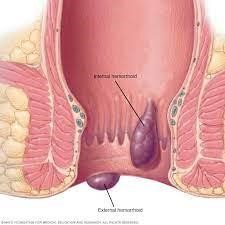The nurse is performing a nutritional assessment on a client who is professional dancer. Which issue reported by the client should alert the nurse to perform further assessment?
Sweaty palms.
Bunions.
Dry skin.
Fatigue.
The Correct Answer is D
Choice A
Sweaty palms are incorrect. Sweaty palms could be a normal response to physical activity and might not necessarily indicate a significant underlying issue.
Choice B
Bunions are incorrect. While bunions can cause discomfort, they might not be directly related to overall health, especially in comparison to fatigue.
Choice C
Dry skin is incorrect. Dry skin could be related to various factors, including environmental conditions or skincare habits. While it's worth addressing, it might not be as immediately concerning as unexplained fatigue.
Choice D
Fatigue is correct. For a professional dancer, fatigue should be an issue that alerts the nurse to perform further assessment. While all of the options can provide information about the client's health, fatigue in a professional dancer could be indicative of various underlying issues that may affect their overall well-being and performance.
Fatigue in a dancer might result from factors such as inadequate nutrition, overtraining, insufficient rest, or underlying medical conditions. It's important for the nurse to explore further to understand the potential causes of the fatigue and address them appropriately.
Nursing Test Bank
Naxlex Comprehensive Predictor Exams
Related Questions
Correct Answer is B
Explanation
Choice A
Protein is not essential. While protein can influence blood sugar levels to some extent, its effect is much smaller compared to carbohydrates. Protein is not typically counted as a primary factor in insulin dosing.
Choice B
Carbohydrates are essential. For a client with type 1 diabetes mellitus who uses both short-acting (mealtime) and long-acting (basal) insulin, counting carbohydrates is essential for meal planning and insulin dosing. Carbohydrates have the most direct and significant impact on blood sugar levels. When carbohydrates are consumed, they are broken down into glucose, which enters the bloodstream and can lead to increased blood sugar levels
Choice C
Dairy is not essential. Dairy products can contain carbohydrates (such as lactose), but the carbohydrate content varies and is not as significant as in foods like grains, fruits, and starchy vegetables.
Choice D
Fats are not essential. Fats have minimal direct impact on blood sugar levels. However, they can affect the overall rate of digestion and absorption of carbohydrates, potentially influencing the timing of insulin administration. But carbohydrate counting remains the primary focus for insulin adjustment.
Correct Answer is B
Explanation
Choice A
Explain the benefits of a high fibre diet is not correct response. While a high fibre diet can indeed be beneficial for individuals with haemorrhoids by promoting regular bowel movements and reducing strain during defecation, the immediate concern here is addressing the client's understanding about avoiding nuts and seeds. This information could be provided as a follow-up after confirming the client's understanding in response to option B.
Choice B
Confirm that these foods should be avoided is the correct response. In this situation, the nurse's first response should be to confirm the client's understanding and provide accurate information about the need to avoid certain foods. Nuts and seeds can be challenging to digest and may lead to irritation and inflammation in individuals with haemorrhoids. Confirming the client's understanding and providing guidance aligns with the nurse's role in patient education and care.
Choice C
Encourage soft foods such as yogurt is not the correct response. Encouraging soft foods like yogurt is a reasonable suggestion for someone with haemorrhoids, as soft foods are generally easier to digest and less likely to cause irritation. However, the client's statement was specifically about avoiding nuts and seeds. While this choice might be relevant, it doesn't directly address the client's statement.
Choice D
Suggest that the client also avoid fruit skins is not the correct response. This option is not directly related to the client's concern about nuts and seeds. Fruit skins generally contain dietary fibre, which can be beneficial for maintaining regular bowel movements. While some individuals might find that certain fruits with tough skins could exacerbate their haemorrhoid symptoms, this advice might be better suited for a separate discussion about dietary choices rather than as a direct response to the client's statement.

Whether you are a student looking to ace your exams or a practicing nurse seeking to enhance your expertise , our nursing education contents will empower you with the confidence and competence to make a difference in the lives of patients and become a respected leader in the healthcare field.
Visit Naxlex, invest in your future and unlock endless possibilities with our unparalleled nursing education contents today
Report Wrong Answer on the Current Question
Do you disagree with the answer? If yes, what is your expected answer? Explain.
Kindly be descriptive with the issue you are facing.
